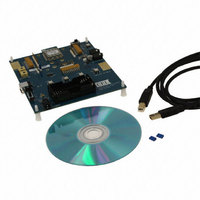ZICM2410P0-1C CEL, ZICM2410P0-1C Datasheet - Page 6

ZICM2410P0-1C
Manufacturer Part Number
ZICM2410P0-1C
Description
MODULE MESHCONNECT TXRX W/CONN
Manufacturer
CEL
Series
MeshConnect™r
Specifications of ZICM2410P0-1C
Frequency
2.4GHz
Data Rate - Maximum
1Mbps
Modulation Or Protocol
802.15.4 Zigbee
Applications
Home/Building Automation, Industrial Control
Power - Output
6dBm
Sensitivity
-97dBm
Voltage - Supply
2.1 V ~ 3.3 V
Current - Receiving
35mA
Current - Transmitting
44mA
Data Interface
Pads for Pins
Memory Size
96kB Flash, 8 kB RAM
Antenna Connector
U.FL
Operating Temperature
-40°C ~ 85°C
Package / Case
Module
Wireless Frequency
2.4 GHz
Interface Type
I2S, SPI, UART
Security
128 bit AES
Operating Voltage
2.1 V to 3 V
Output Power
5 mW
Antenna
U.FL Connector
Operating Temperature Range
- 40 C to + 85 C
Lead Free Status / RoHS Status
Lead free / RoHS Compliant
For Use With/related Products
ZIC2410
POWER AMPLIFIER
VOICE CODEC
SOFTWARE TOOLS
The MeshConnect module does not incorporate an external Power Amplifier and therefore the RF output port is connected
directly (through matching components) to the RF antenna. As CEL’s ZIC2410 IEEE 802.15.4 / ZigBee transceiver already
offers the industry’s best link budget at 106 dB, even without an external PA the MeshConnect can maintain wireless
connection over long distance (3,000 ft line-of-sight).
INTERFACE
The MeshConnect has all major communication interfaces routed from the ZIC2410 to the module edge connectors:
ZIC2410 includes three voice codec algorithms: μ-law, a-law and ADPCM.
The μ-law algorithm is a companding algorithm primarily used in the digital telecommunication systems of North America
and Japan. As with other companding algorithms, its purpose is to reduce the dynamic range of an audio signal. In the
analog domain this can increase the signal-to-noise ratio (SNR) achieved during transmission and in the digital domain, it
can reduce the quantization error (hence increasing signal to quantization noise ratio). These SNR improvements can be
traded for reduced bandwidth and equivalent SNR instead. The a-law algorithm is a standard companding algorithm used in
European digital communications systems to optimize/modify the dynamic range of an analog signal for digitizing.
The a-law algorithm provides a slightly larger dynamic range than the μ-law at the cost of worse proportional distortion for
small signals.
Adaptive DPCM (ADPCM) is a variant of DPCM [Differential (or Delta) pulse-code modulation] that varies the size of the
quantization step, allowing further reduction of the required bandwidth for a given signal-to-noise ratio. DPCM encodes
the PCM values as differences between the current and the previous value. For audio applications this type of encoding
reduces the number of bits required per sample by about 25% compared to PCM.
CEL offers complete SW tools for MeshConnect that customers need to create their ZigBee application.
PROFILE BUILDER
The output files can be seamlessly integrated with the CEL ZigBee stack libraries.
• Profile Builder allows for easy creation of custom ZigBee profiles for use in end-user applications.
• Uses the input requirements to modify a set of ‘C’ source files which include the necessary ZigBee functions.
• Output files will contain the ZigBee Device Object (ZDO) descriptors and the ZigBee Device Profile (ZDP) descriptors.
• The ZDO and ZDP define the ZigBee node and functionality.
• UART1 & UART 2
• I
• SPI
2
S
MeshConnect™ Module
Page 6













